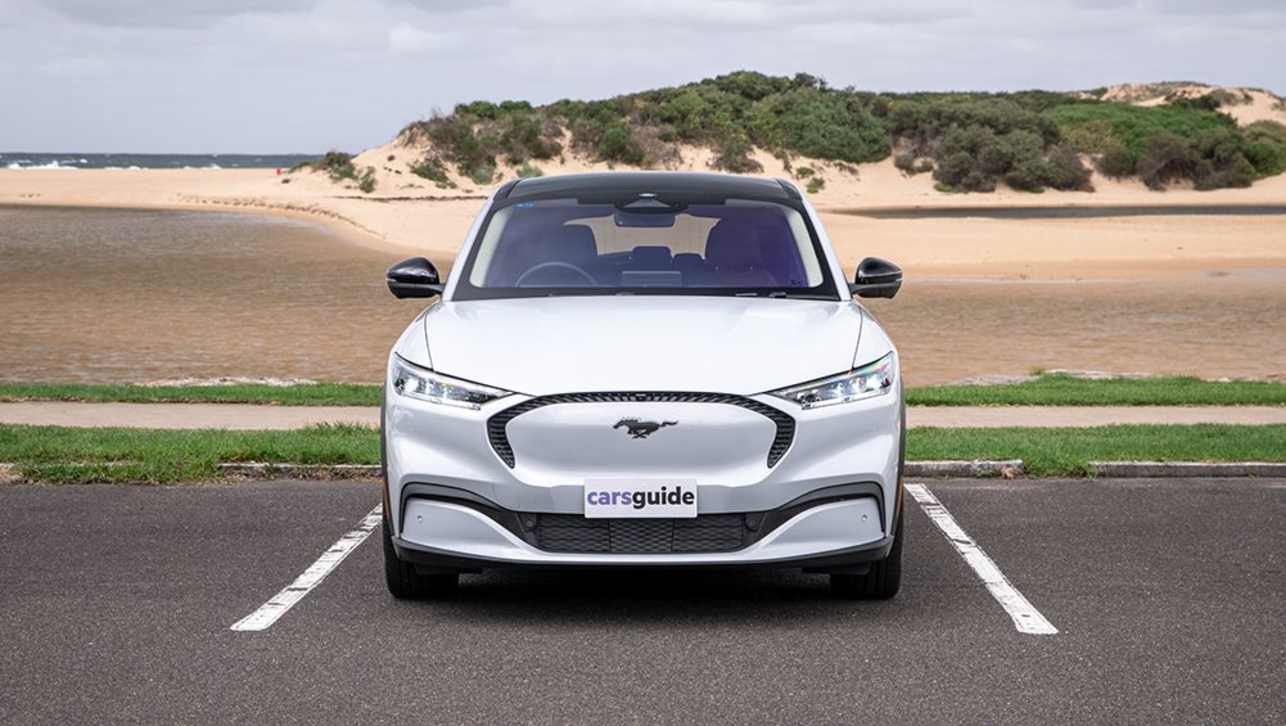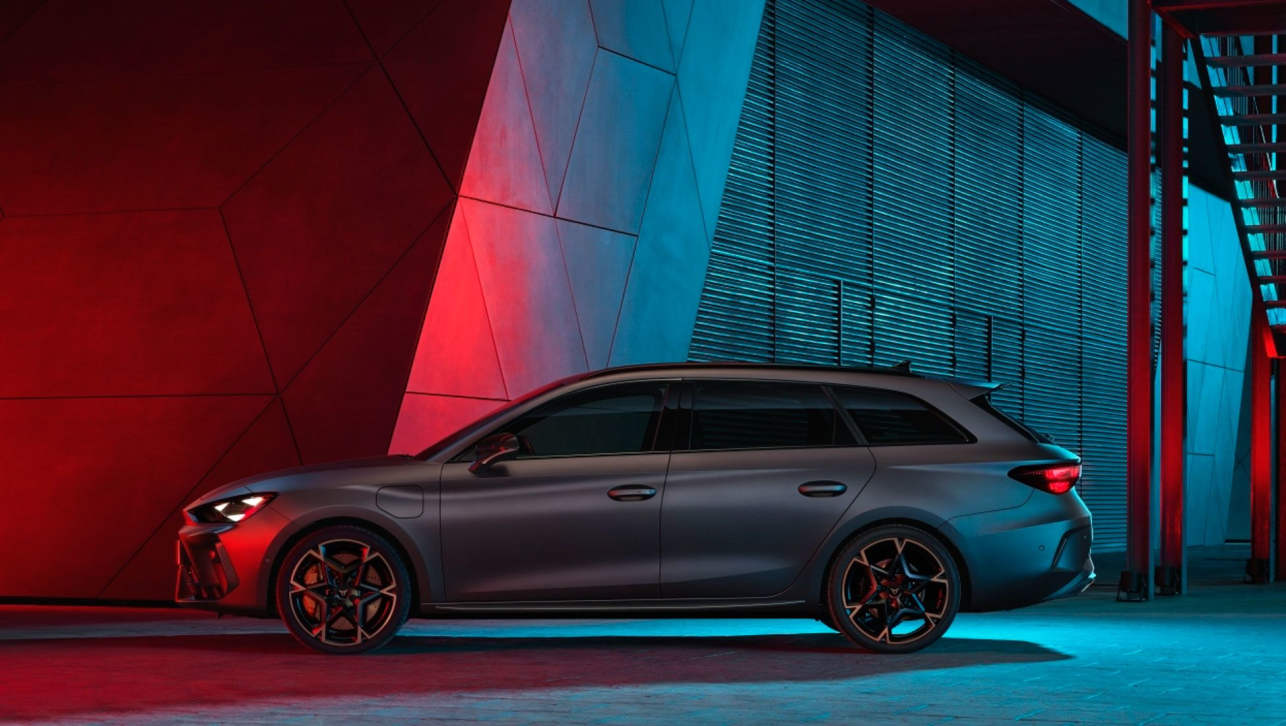Can electric cars jumpstart Ford Australia’s revival while reducing its reliance on the best-selling Ranger ute?
With Ford of Europe joining the chorus of other manufacturers stating that their entire passenger-car line-up will be electric by 2030, this has profound implications for the local outfit in Australia.
Ford finally seems to be seeing the light, after years of reactionary rather than revolutionary models, especially post-Australian manufacturing and the demise of the one-time best-selling Falcon and innovative Territory in 2016. The old days of the unloved Endura, Mondeo and EcoSport are gone, while the company globally is finally gearing up for an electrified future.
The Blue Oval is not going it alone either, instead leveraging Volkswagen Group technology to fill in the model gaps as consumers migrate from internal combustion engine (ICE) to hybrid and electric vehicles (EVs) worldwide.
This means Ford Australia has a smorgasbord of future best-sellers to cherry pick from. All it needs is the courage and conviction to say ‘Yes, please!’
They say product is everything. If the market likes what it sees, sales will surely follow. While there are still hurdles to overcome, the tide is turning and the time of the EV feels like it’s just about upon us at last.
After announcing Ford's US$29 billion (A$29 billion) investment in EVs through to 2025 in February, global CEO Jim Farley told US publication CNBC that "we’re not going to cede the future to anyone”.
With the following three EVs outlined below, Ford Australia is in a position to be ready and waiting for the coming new-model and customer onslaught.
Ford’s Toyota RAV4-sized EV mid-size SUV
MEB is, of course, Volkswagen’s modular electric drive matrix architecture that underpins a slew of vehicles just released and upcoming, and not just for that brand but also across the German corporation’s sister companies like Skoda, Seat, Cupra and Audi.
The thing is, MEB will also host an undisclosed number of future Ford vehicles, as per a wide-ranging co-op agreement, starting with this intriguing mid-size SUV.
No name to share as yet, or timings, or Blue Oval-specific details, but being loosely based on the ID.4 platform represents a true watershed moment Ford, giving it access to an all-electric, Toyota RAV4-sized crossover built to be affordable as well as class leading. As far as hitting the right market, this is ground zero.
The covered-up prototype we’ve seen on fordauthority.com reveals a squarer and perhaps more rugged looking machine than the ID.4 and its Skoda Enyaq sister EV SUV, meaning that Ford is putting its own stamp on the electric newcomer, rather than merely grafting on a Mustang Mach-E-style nose and badges on the back.
It is understood that Ford’s long-serving Cologne plant in Germany will assemble the vehicle – as opposed to Volkswagen’s Zwickau plant that manufactures the ID.4 – meaning that there might be more differentiation slated for the mystery EV SUV. The Enyaq, by the way, is made at the Mladá Boleslav facility in the Czech Republic.
So, what can Aussie buyers expect under the skin?
Whether the ID.4’s 52kWh to 82kWh battery packs and 109-225kW electric motors also apply to the Ford is also unknown, but with over 500km of range promised by the former in its best spec, such components bide very well for EV buyers in Australia.
ETA? Don’t expect it here before 2023 at the earliest, but we hear that it is definitely on Ford Australia’s wishlist – along with an anticipated Focus-sized small hatchback similar in shape and scope to the Volkswagen ID.3.
The Ford/Volkswagen MEB partnership isn’t the only shared vehicles between the two automotive giants either…
Ford’s low-cost EV crossover/hatch
Meanwhile, Ford’s expanding alliance with the Volkswagen Group is fanning speculation that an all-new affordable EV architecture currently under development may underpin an even smaller – and crucially, less expensive – crossover/hatch model from Ford.
Dubbed ‘MEB-Lite’, the platform aims to lower the entry price of EVs to between €20,000/A$31,113 and €25,000/A$39,000, when the first vehicles using it debut by 2025. To that end, Volkswagen’s Spanish subsidiary Seat may oversee the production infrastructure in Spain to help keep costs down.
Reports suggest that smaller SUVs will be the main recipients, with the Volkswagen version rumoured to be called the ID.2, while an ID.1 city hatchback is also expected at about that time. Seat, Skoda and likely even Audi crossovers and superminis spun off from these are also in line to follow.
So, what does this mean for Ford? With smaller SUVs and crossovers already decimating supermini and small hatch sales globally, it is highly likely that the eventual Fiesta and Puma replacements may include a uniquely designed EV spinoffs employing the MEB-Lite hardware.
This would be a win-win situation for both the Blue Oval and The People's Car, as their combined demand could see the 500,000 annual production number targets met. It also finally gives them an answer to Stellantis’ e-CMP EV architecture that’s currently rolling out in the electrified Peugeot e-208 supermini/e-2008 crossover and their fraternal-twin Opel Corsa-e/Opel Mokka-e equivalents.
Details are scant right now, but up to a 45kWh battery pack offering comfortably more than 300km of range are expected targets.
With truly accessible pricing to meet the fierce threat from rampaging Hyundai and Kia, and the sort of advanced zero-emissions tech consumers are increasingly crying out for, this is the sort of vehicle Ford Australia could really get behind and join other EV pioneers in the race to democratise EVs.
The last time the company was this progressive was when the phenomenally successful Ford Laser normalised FWD hatchbacks to sceptical Aussies in the ‘80s. This could be its 21st-century spiritual successor – only electrified, of course.
The potential rewards are huge. The greater risk would be not to jump in feet-first.
Ford Mustang Mach-E

Revealed in late 2019, the Mustang Mach-E performance-orientated electric SUV is only now getting going in North America, Europe and elsewhere, with early signs suggesting stronger-than-expected demand for Ford’s retro-themed electric rocket.
It’s still very much up in the air as to whether Australia will see the Mach-E, but initial sales data out of the United States suggest that over 70 per cent of buyers are from rival brands, meaning it has what it takes to deliver new-to-Ford customers – the holy grail of the car industry.
Built on the extensively revised C2 architecture that is used in a bevy of Ford vehicles offered here and overseas only – namely the Focus, Escape and Bronco Sport – and dubbed GE1 (for Global Electrified 1), the Mach-E has nothing to do with the Volkswagen MEB-derived models, and that has led some observers to declare it a dead-end development as it is not a bespoke EV and is thus compromised.
However, it is available in right-hand drive, so there's no reason why Australians can't have a piece of this EV pie, and it is obviously doing something right to appeal to non-Ford buyers, and has the potential to be a modern-day Falcon GT performance flagship, since it has the muscle, speed and Pony Car-infused swagger to take on Tesla, Porsche, BMW, Audi and Mercedes EVs.
To recap, the Mach-E’s GT 342kW/830Nm Performance Edition flagship can hit 100km/h from standstill in 3.5 seconds; rear- and all-wheel-drive configurations are available; and with 75.7kWh and 98.8kWh battery pack choices, there’s range of between 400km and 600km respectively to enjoy.
What’s not to love? This is the sort of brand-rebuilding bombshell Ford Australia cannot afford to waste.





.jpg)



.jpg)

.jpg)
_.jpg)
.jpg)

.jpg)


.jpg)


.jpg)
.jpg)
.jpg)
.jpg)
.jpg)


.jpg)

Comments